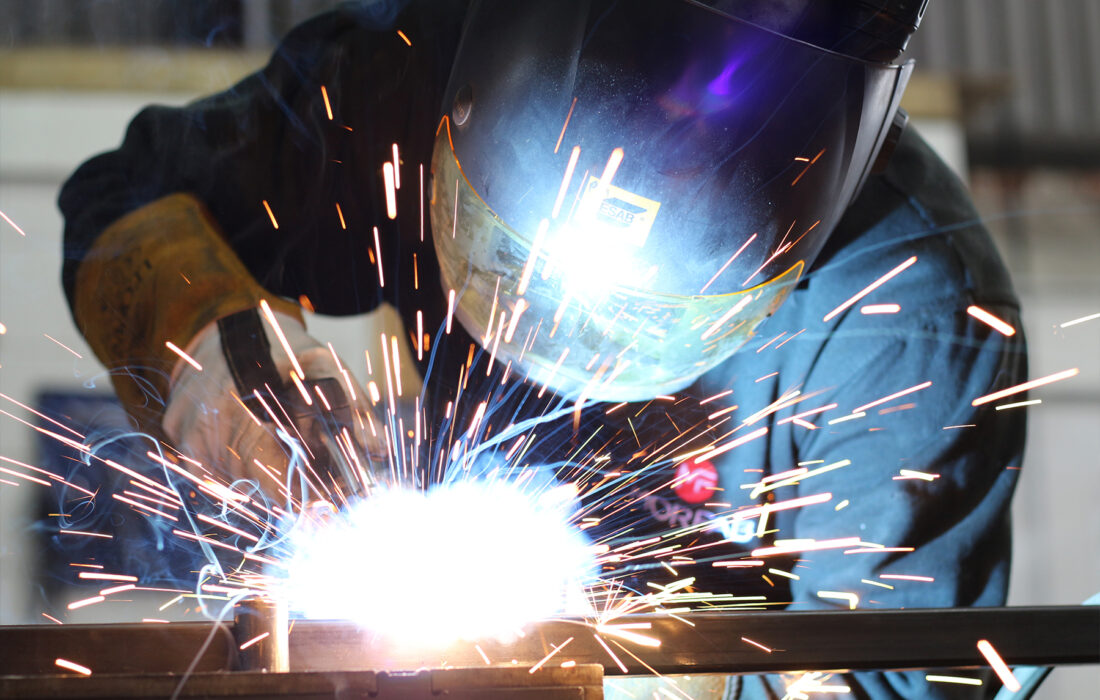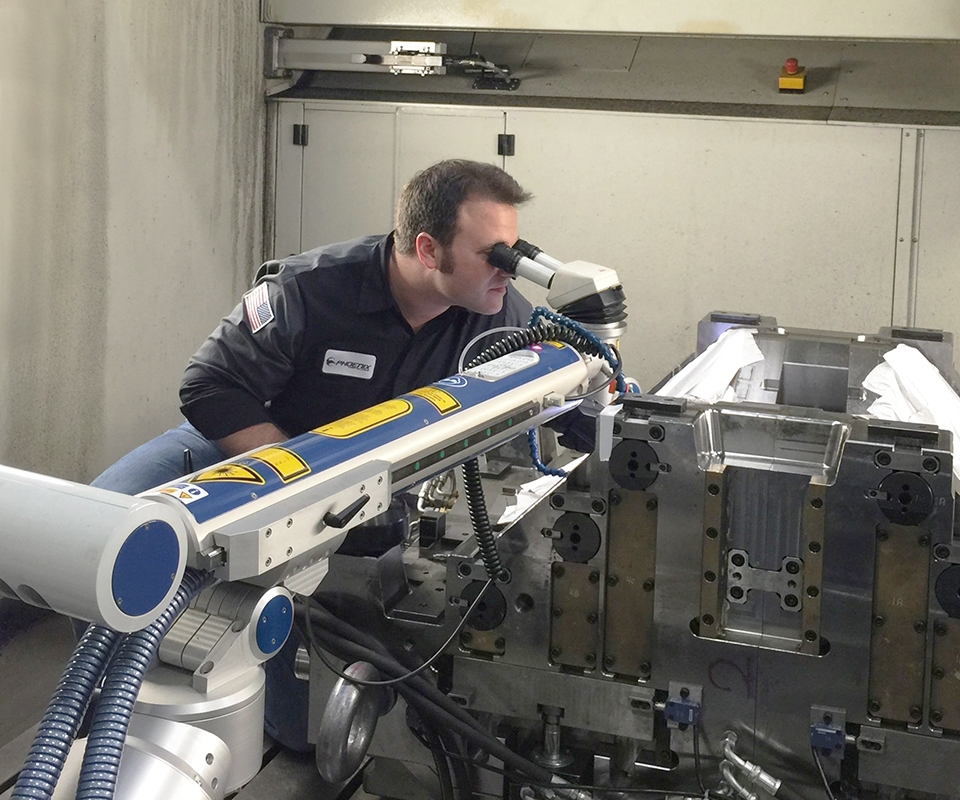Common Welding Fixing Issues and Exactly How to Address Them Properly
Welding repairs usually encounter a range of issues that can endanger the integrity of the last item. Usual issues consist of insufficient penetration, porosity, and imbalance, to name a few. Each defect provides unique challenges that need details strategies for resolution. Comprehending these problems is important for welders intending to improve their end results and skills. This discussion will discover these usual welding repair issues and reliable approaches to resolve them.
Poor Infiltration
Inadequate penetration occurs when the weld steel fails to completely fuse with the base material, resulting in weak joints and potential structural failures. This issue frequently stems from insufficient warm input, wrong electrode angle, or incorrect welding speed. Welders might come across insufficient penetration due to a miscalculation of the necessary criteria for a specific product density or kind. Additionally, contamination on the base product's surface can prevent efficient bonding, aggravating the problem. To resolve poor penetration, welders should ensure proper setups on their devices and maintain a tidy job surface. Routine assessment of welds is advised to recognize any type of deficiencies early, enabling for timely modifications and the prevention of endangered structural stability in welded settings up.
Porosity
Porosity is a common flaw in welded joints that materializes as small gas bubbles caught within the weld metal. This issue can compromise the integrity of the weld, causing minimized stamina and prospective failing under stress. Montana Mobile Welding and Repair Belgrade Welding. Porosity generally occurs from contamination, dampness, or inappropriate welding strategies, which enable gases to escape into the molten weld pool. To resolve porosity, welders should ensure correct surface preparation, preserve a tidy functioning environment, and use appropriate welding parameters. Additionally, choosing the best filler material and shielding gas can alleviate gas entrapment. Routine examination and testing of welds can aid determine porosity early, assuring prompt corrective activities are taken, consequently protecting the top quality and dependability of the bonded structure
Imbalance
Misalignment in welding can develop from different elements, consisting of improper configuration and thermal growth. Understanding the source is important for effective resolution. A number of correction techniques are offered to straighten components and ensure structural stability.
Sources of Misalignment
Welding misalignment commonly comes from a selection of underlying problems that can compromise structural integrity. One key reason is improper fit-up of parts prior to welding, which can result in spaces and unequal surface areas. Variations in thermal development during the welding procedure can also result in distortion, particularly if the products being joined have different coefficients of growth. Additionally, poor fixturing and clamping might stop working to hold elements safely in position, resulting in motion during welding. Poorly kept devices, including welding makers and tools, might present disparities in the weld grain, further adding to imbalance. Finally, operator mistake, originating from insufficient training or experience, can also play a substantial duty in developing misaligned welds.
Adjustment Strategies Available
Resolving misalignment properly needs a mix of corrective methods tailored to the specific problems available. One common approach is the usage of jigs or fixtures to hold parts in the correct placement during welding, guaranteeing consistent positioning. Furthermore, pre-heating the products can help in reducing distortion and enhance fit-up. For substantial misalignment, mechanical adjustment strategies, such as using hydraulic jacks or clamps, can be utilized to deal with the setting before welding. Post-weld warmth therapy might also be needed to soothe tensions triggered by misalignment. Ultimately, cautious inspection and adjustment during the setup stage can stop imbalance concerns from becoming substantial problems, promoting a smoother welding procedure and enhancing general structural integrity.
Distortion
Distortion is a common challenge in welding that can occur from various factors, including unequal heating & cooling. Recognizing the causes of distortion is important for applying reliable prevention strategies. Addressing this issue not only boosts architectural integrity but additionally improves the general quality of the weld.
Sources of Distortion
When subjected to the intense heat of welding, materials often undertake adjustments that can lead to distortion. This phenomenon mostly emerges from thermal development and tightening throughout the welding procedure. As the weld location heats up, the material broadens; upon air conditioning, it acquires, which can develop internal tensions. Additionally, uneven home heating across a work surface can worsen these tensions, leading to bending or flexing. The sort of material additionally plays a substantial function; metals with differing thermal conductivity and coefficients of expansion might react differently, leading to uncertain distortions. Additionally, inadequate joint layout and insufficient fixturing can add to imbalance during welding, boosting the likelihood of distortion. Understanding these reasons is crucial for effective check these guys out welding fixing and prevention techniques.
Prevention Techniques
Effective avoidance methods for distortion throughout welding emphasis on regulating heat input and making certain proper joint layout. Keeping a consistent heat input aids to lessen thermal development and contraction, which can cause distortion. Utilizing strategies such as preheating the workpiece can also decrease the temperature level gradient, advertising uniform heating. In addition, picking proper joint designs, such as T-joints or lap joints, can improve stability and decrease stress and anxiety concentrations. Applying correct fixturing to safeguard the work surfaces in position better aids in maintaining alignment during the welding procedure. Staggered welding sequences can distribute warm extra uniformly, stopping local distortion. By applying these techniques, welders can greatly decrease the probability of distortion and improve the total high quality of their welds.
Splitting
Splitting is a typical problem come across in welding repairs, typically resulting from various elements such as incorrect cooling prices, material choice, or insufficient joint prep work. The incident of splits can greatly compromise the honesty of the weld, leading to prospective failings during procedure. To resolve this concern, welders have to first analyze the root creates, guaranteeing that products are compatible and suitably chosen for the details application. Additionally, regulating the air conditioning price throughout the welding procedure is necessary; rapid cooling can induce stress and cause breaking. Appropriate joint design and prep work additionally add to decreasing the threat. Applying these methods can boost weld high quality and toughness, inevitably lowering the possibility of breaking in completed weldments.

Incomplete Fusion
A considerable concern in welding fixings is incomplete fusion, which happens when the weld metal does not effectively bond with the base material or previous weld passes - Montana Mobile Welding and Repair Welding. This defect can result in weak points in the joint, potentially compromising the integrity of the bonded framework. Variables adding to incomplete blend consist of insufficient warmth input, inappropriate welding a fantastic read strategy, and contamination of the surface areas being signed up with. To resolve this concern successfully, welders need to ensure appropriate pre-weld cleaning and surface area preparation, in addition to readjust their welding criteria to achieve ample penetration and combination. Regular assessment throughout the welding process can additionally help identify insufficient fusion early, enabling prompt rehabilitative actions to enhance the general top quality of the weld
Overheating
While welding repair services can improve structural integrity, overheating presents a considerable obstacle that can cause material deterioration. Excessive warm during welding can change the mechanical residential or commercial properties of steels, causing decreased toughness, enhanced brittleness, and bending. This phenomenon is especially essential in high-stress applications where structural integrity is extremely important. Determining getting too hot can involve aesthetic examinations for discoloration or distortion, in addition to keeping an eye on temperature throughout the welding procedure. To reduce the dangers related to Full Report getting too hot, welders ought to employ ideal strategies, such as controlling warm input, readjusting travel rate, and using ideal filler materials. In addition, executing pre- and post-weld heat therapies can assist recover material homes and improve the general quality of the fixing, ensuring long-term performance and security.
Frequently Asked Inquiries
What Are the Typical Signs of a Welding Issue?

Just How Can I Evaluate My Welds for High quality?
To test welds for high quality, one can make use of visual inspections, ultrasonic screening, and radiographic techniques. Each method assures architectural honesty, determines problems, and confirms adherence to specified standards, eventually improving the dependability of the welded joints.
What Safety Preventative Measures Should I Take While Welding?
When welding, one must focus on security by putting on suitable individual protective tools, guaranteeing appropriate air flow, protecting combustible materials away, maintaining a tidy office, and knowing environments to avoid crashes and injuries.
Can I Fix a Weld Without Redoing the Entire Joint?
Repairing a weld without redoing the entire joint is possible, depending on the damages (Fabrication). Methods such as grinding, including filler product, or using a welding process can efficiently resolve particular problems while preserving the bordering structure
What Tools Are Vital for Effective Welding Repair Works?
Important devices for effective welding repair work consist of a welding machine, cable brush, mill, protective gear, clamps, and filler products. Each tool plays a vital duty in ensuring high quality and safety during the repair process. Porosity normally occurs from contamination, dampness, or incorrect welding strategies, which permit gases to leave right into the liquified weld swimming pool. Poorly conserved equipment, including welding makers and tools, may present variances in the weld bead, further adding to misalignment. When subjected to the extreme warm of welding, products usually undertake modifications that can lead to distortion. Fracturing is a typical concern encountered in welding fixings, often resulting from various variables such as improper cooling rates, product option, or poor joint prep work. A significant problem in welding repair work is insufficient blend, which occurs when the weld metal does not effectively bond with the base material or previous weld passes.